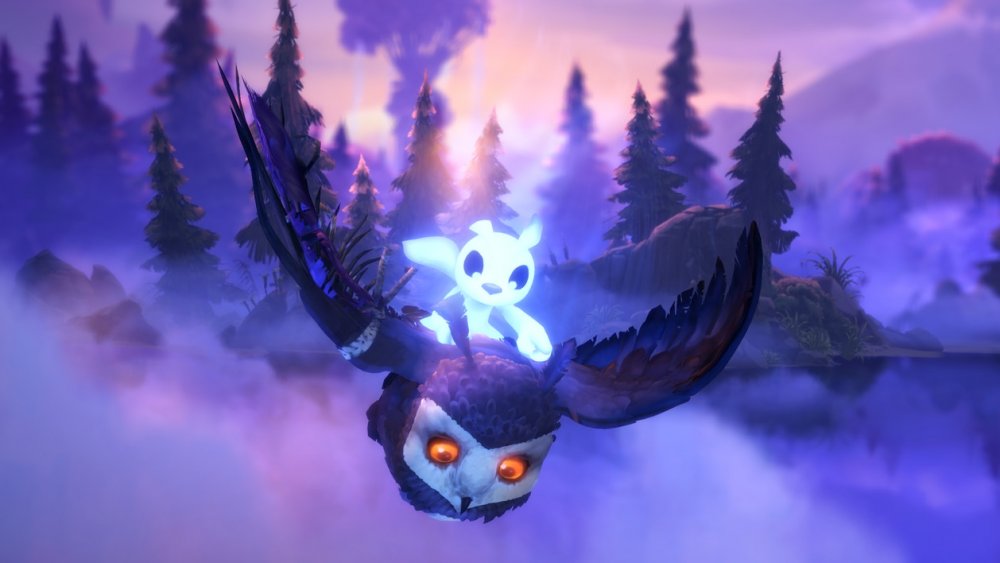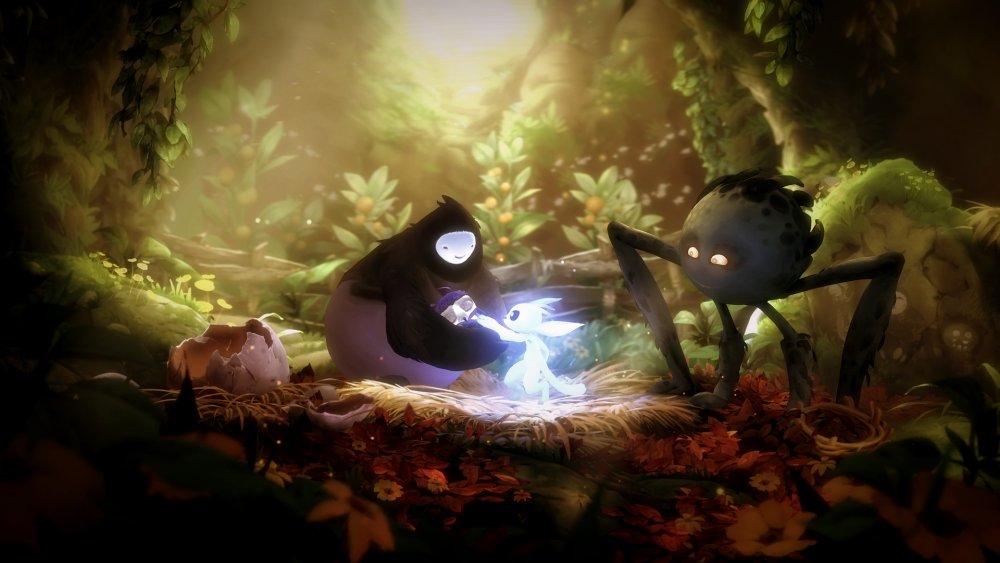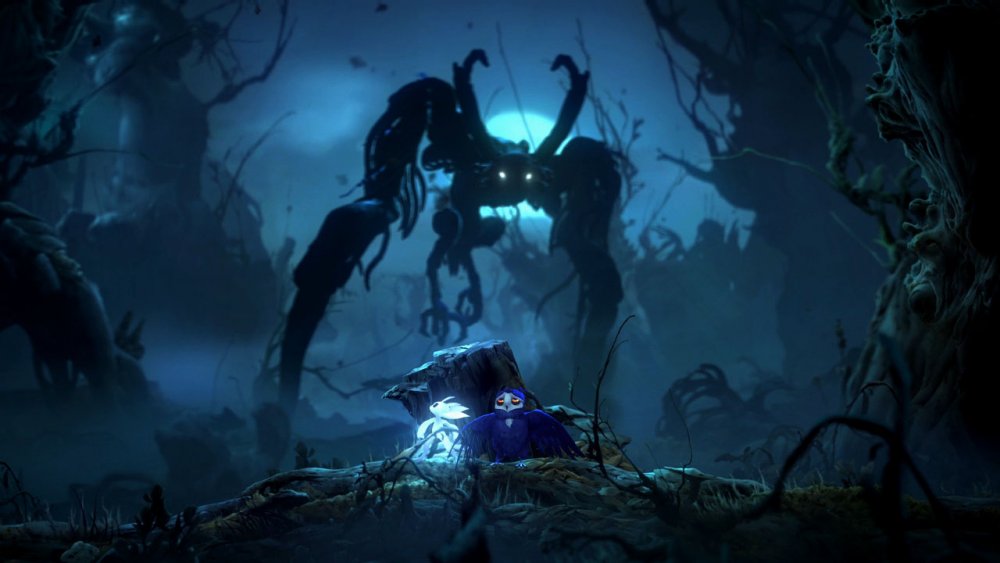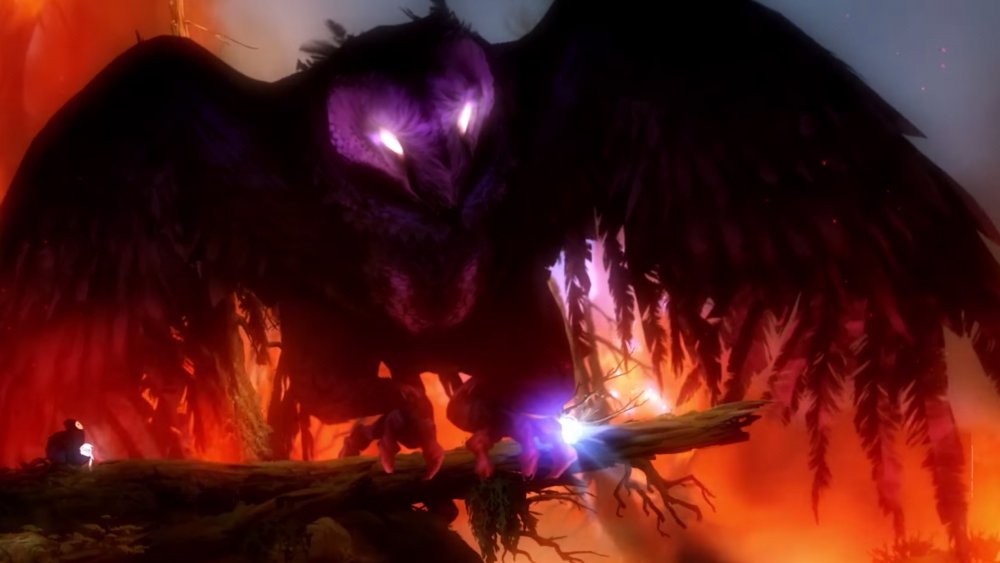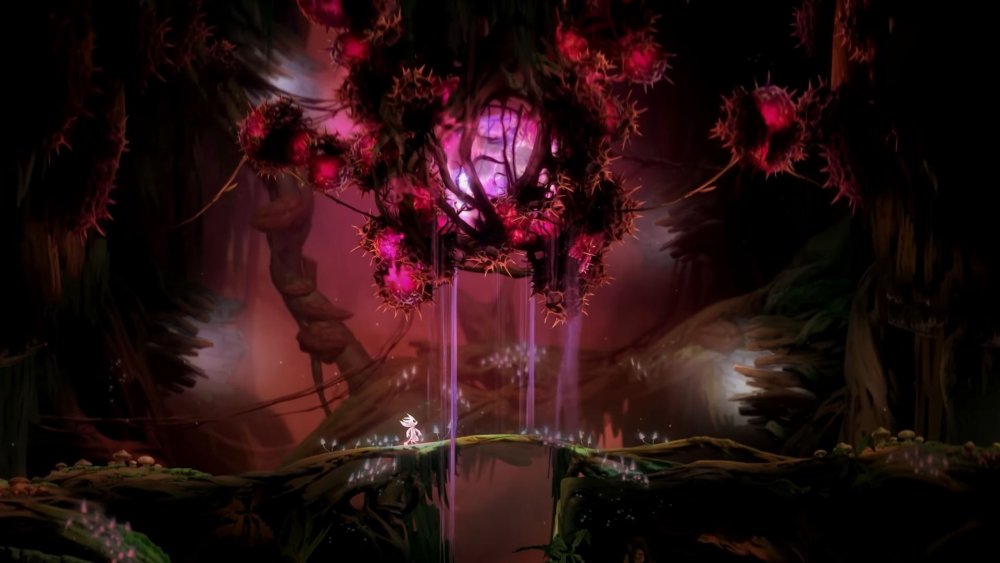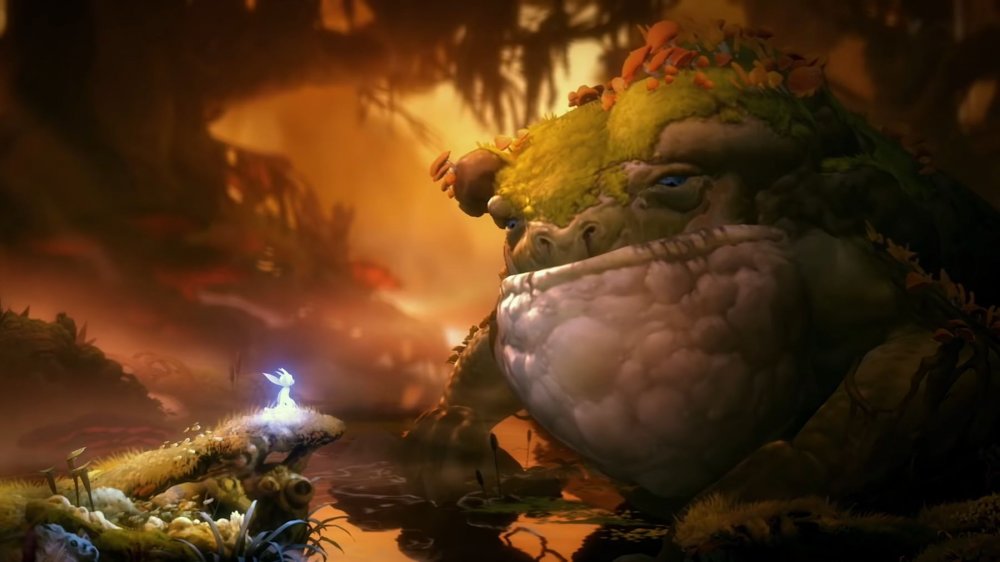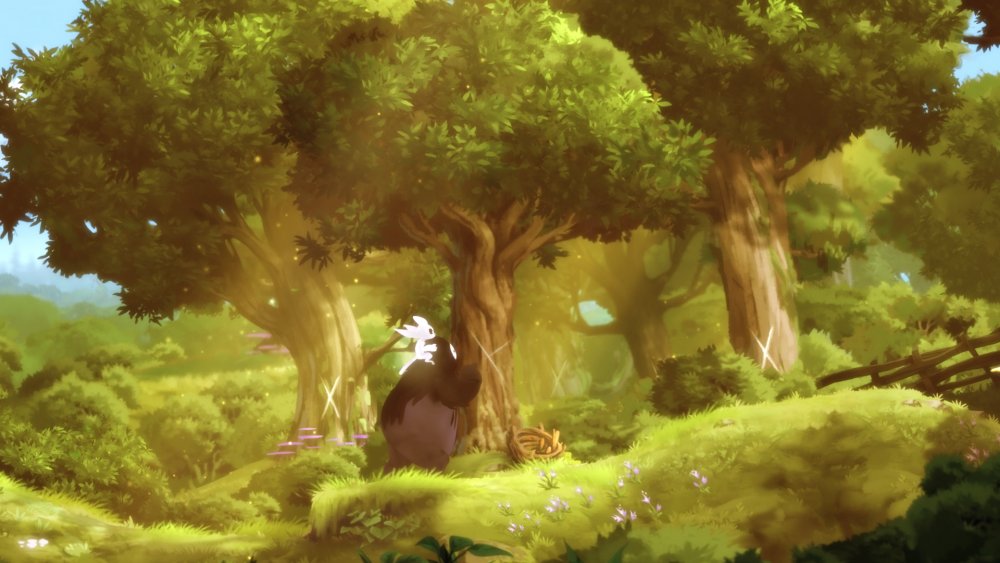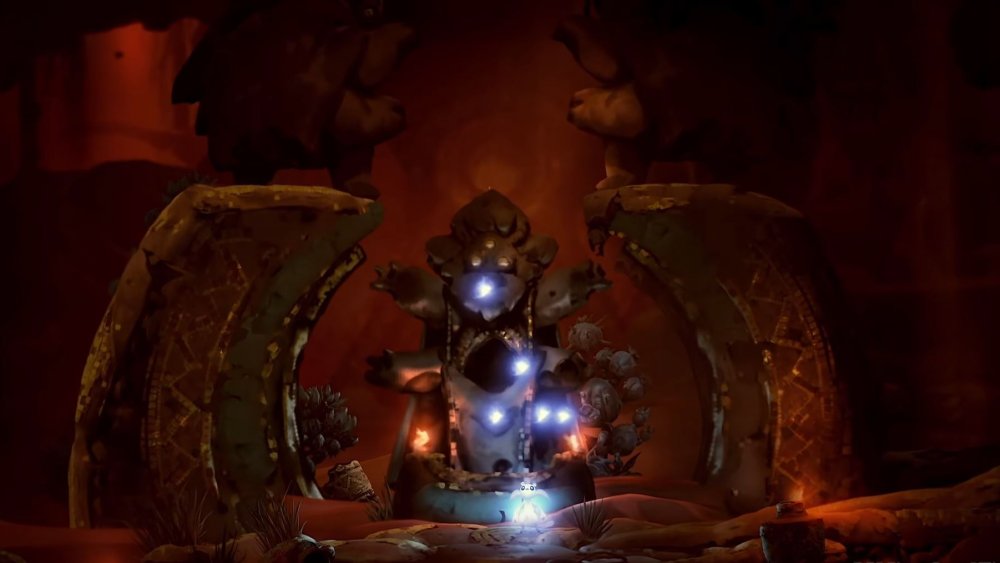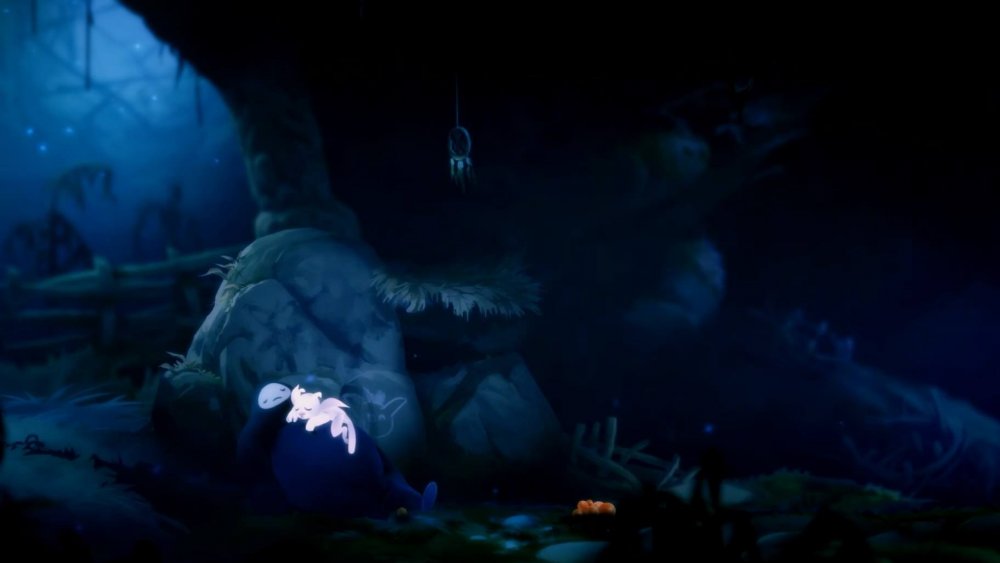Things Only Adults Notice In The Ori Games
The Ori series is celebrated not only for its beautiful art and tight platforming, but also its emotional storytelling and character building. The games are potent examples of video games as an art form.
Released in 2015 on Xbox One and PC, Ori and the Blind Forest received strong reviews. A year later, Ori and the Blind Forest Definitive Edition launched. A sequel, Ori and the Will of the Wisps, followed in March 2020, further charming critics and players alike. Both games center around the titular Ori, a small spirit guardian who journeys through dangerous locales to help protect the forest and the creatures that live in it.
Though the Ori games have garnered a reputation for being rather difficult, persistent players are rewarded with a uniquely touching experience for their efforts. While some younger players may be taken in by the bright colors and the cute characters, older players may appreciate some of the deeper themes and less apparent details or references that Moon Studios baked into the series.
Massive spoilers ahead.
The responsibilities of parenthood
Ori and The Blind Forest paints Naru as a maternal figure, protecting and caring for Ori even in the direst of circumstances. When food grows scarce, Naru prioritizes Ori and, as a result, passes away from starvation. Similarly, Kuro is motivated by the instinct to protect her sole surviving egg from harm. While this initially surfaces as a desire to destroy Ori, who she believed was a threat to her egg, Kuro is moved by Naru and Ori's bond. Reminding her of the love she harbors for her egg, Kuro sacrifices herself to save not just her egg but the entire forest.
Ori takes on a parental role towards Ku, Kuro's offspring in Ori and the Will of the Wisps, following Kuro's death. Ori in particular assumes a guardian-like role over Ku when Ori makes the sacrifice at the end of the game, enabling Ku to come back to life while Ori becomes the new Spirit Tree. Both the games focus on the parental bond and the responsibilities and sacrifices associated with it. Ori's journey is especially tied to this, as they go from the one being cared for in the first game to the one sacrificing themselves in Will of the Wisps.
Loneliness and loss
Throughout both of the Ori games, death is not exactly an uncommon occurrence. Because of this, the characters are often forced to confront feelings of loneliness and loss. In the first game, Naru passes away, leaving Ori alone to restore balance to the land of Nibel.
Ori is far from the only character to experience loss in The Blind Forest. After Ori saves Gumo from the decay's corruption, you learn he is the last surviving member of his race. Similarly, the game's primary antagonist, Kuro (who initially appears to be a typical one-note villain), is revealed to have lost three of her children to the Spirit Tree's light, making her much more sympathetic. The sequel continues the trend, most notably with the introduction of the characters Ku and Shriek. Ku, the daughter of Kuro, is killed by Shriek, an orphan who was rejected by the other owls due to her deformed appearance.
In each instance, characters have to make decisions about how they handle their loneliness. Kuro experiences the loss of her babies and decides to protect her remaining egg at all costs. She becomes so consumed with her rage that she becomes a monster. Shriek carries the hurt of rejection and loneliness with her as she terrorizes Niwel. Even when Ori defeats her, she remains hostile to her final breath.
Light versus dark
One of the more blatant themes tackled in the series is the battle between light and darkness. Ori is a literal representation of good (light) attempting to defeat the darkness (decay) that exists within the forest. To contrast Ori, both Kuro and Shriek are hulking figures of imposing shadow when they appear on screen. As Ori represents goodness in trying to protect the forest, the large birds of prey that they face represent the power of evil, or so it appears at first glance.
One of the more interesting parts of the Ori games is the reluctance to label characters as solely evil. Kuro is portrayed throughout as a grieving mother who is redeemed in the end. Shriek, who ultimately rejects redemption, is still sympathetic. In Will of the Wisps, the attacking enemies are not just bad guys; they're led astray by the corruption that affects all of Niwel. The themes in the Ori games still use the tried and true trope of light versus dark, but add a moral grey area reminding players not everything is always black and white.
The decay represents ecological balance
Ori and the Blind Forest has a strong theme of ecological balance from the start of the first game to the end of the second entry. Ori begins their adventure after the forest starts to wither, leaving no food and resulting in Naru's death. Part of this is due to the inability of the Spirit Tree to protect the land, so Ori is required to gather the disparate lights of the three elements: water, wind, and warmth. In doing so, Ori can stop the encroaching corruption from taking over all of Nibel.
In the sequel, Ori and the Will of the Wisps, Ori and Ku become stranded in Niwel after their brief flight is grounded due to a sudden storm. Niwel has long been plagued by corruption due to the Spirit Willow's death, which left the land without any spirit guardians like Ori. By bringing together the scattered lights of the Spirit Willow, Ori can combat the influence of the corruption and heal the land.
Both games have a heavy focus on restoring the ecological balance and returning a natural place to a healthy state. In doing so, the themes of the Ori games point toward promoting a sense of environmental consciousness.
The art looks like a Studio Ghibli film
From the fantastical visual style to the otherworldly storytelling, the world presented in the Ori games feels straight out of a Studio Ghibli film. This is especially true when looking at many of the character designs. For example, Naru slightly resembles No-Face from Spirited Away, while Gumo looks like an enlarged spider version of a Soot Sprite. Additionally, some of the other creatures look like monsters or spirits that one would encounter in one of the various Ghibli worlds.
The environments look very similar to those found in Nausicaä of the Valley of the Wind and Princess Mononoke. According to Moon Studios, this is no coincidence, as Studio Ghibli films actually served as a significant influence on the Ori games. Johannes Figlhuber, a lead artist on Ori and the Blind Forest, said in an interview with Xbox Wire that, similar to Princess Mononoke, the team wanted players "...to feel like a visitor in our strange and beautiful world."
Ori emulates the Rayman series and Child of Light
Though the Ori titles have a recognizable art style, the games seem to borrow very heavily from a few two-dimensional platforming titles, namely recent Rayman games and Ubisoft's Child of Light. The influence that the games draw is not a cheap imitation, but a similar level of craft that went into the visual development of the series.
IGN called Rayman: Origins "this generation's most beautiful platformer" and dubbed Child of Light "ready to be framed and hung in an art gallery." Among other praises, both games were notable for their unique attention to artistic detail, whether it be Rayman's storybook art style or Child of Light's stained glass styling. Both Ori games use lushly painted backgrounds to create a setting that is, at times, dark and foreboding while also playing host to scenes of breathtaking beauty and light. The series, though it borrows from other similar entries in the genre, stands out because of the less cartoony art design.
The untold truth of Will-o'-the-wisps
The second game in the Ori canon, Ori and the Will of the Wisps, alludes to the phenomenon of Will-o'-the-wisps, a fixture of folklore in many parts of the world. In the game, Ori is led into increasingly dangerous areas to retrieve the wisps (fragments) of the Spirit Willow's forest-sustaining light. The wisps in Ori aren't too far removed from how Will-o'-the-wisps function in many real-life mythologies.
Will-o'-the-wisps — or some version of these floating lights — have been seen around the world, ranging from India to Brazil to Australia. Will-o'-the-wisps have been referenced in many pieces of popular media, such as the Harry Potter series, Lord of the Rings, Pixar's Brave, and Paradise Lost.
In some of the more recognizable iterations, Will-o'-the-wisps are balls of fire that hover over the ground or over the water of a bog, marsh, or swamp. These balls of light would often move, frequently enticing wayward travelers to follow them into the dangerous wilderness where many would die in their pursuit. By leading Ori through the most dangerous places in Niwel, the wisps in the game line up well with the established lore around their namesakes.
Nods to animated classics
Having touched on the similarities present in the Ori games' art direction and mechanics, it's no surprise that there are nods to other titles that also helped to influence the games' stories. In an interview with Screenrant, Ori and the Blind Forest's composer said that much of the influence for the game came from films and other media the development team had grown up with. Specifically, he noted Bambi was a reference for him as he composed the score for the game, further emphasizing the influence of animated classics.
Another film that served as inspiration for the first game is Disney's The Lion King, particularly the journey of young Simba after his father is killed. Like Simba, Ori leaves the still-warm body of their guardian only to wander until they stumble upon an ally that helps them along the rest of their journey. Additionally, Warner Bros. Pictures' The Iron Giant influenced the story. In the film, an otherworldly giant made of metal uses its friendship with a young boy to save a town from a nuclear strike. Ori is similar to the giant in that their affection for Naru makes them determined to fix the forest that killed her.

